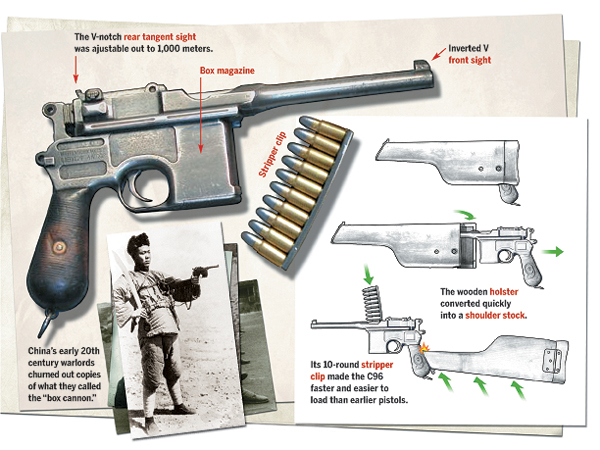
In the 1890s, as German gunsmith Paul Mauser refined his popular bolt-action rifles, three brothers in his firm—Fidel, Friedrich and Josef Feederle—developed a weapon to compete with the 1893 Borchardt, the world’s first mass-produced semiautomatic pistol. First tested in March 1895, the Mauser C96 (Construktion 1896) entered full-scale production in 1897.
Popularly known as the “Broomhandle” for its distinctive grip, the C96 had a top-loading box magazine that accepted 10-round stripper clips. But its one-piece barrel and receiver made the pistol difficult to manufacture, and the German army never fully accepted the C96 as it later did the Luger P08, which was easier to shoot and better balanced. During World War I, however, Luger could not make enough P08s to meet demand, so the army ordered 150,000 C96s from Mauser, chambered to use the same 9mm round as the Luger.
Mauser resumed postwar production of its C96 in 1920, reducing the barrel length from 5.5 inches to 4 inches in accordance with 1919 Versailles Treaty conditions. The company made slightly more than a million Broomhandles, including an automatic version (the M1932), before ceasing production in 1937. The armies of Austria-Hungary, Italy and Turkey, among others, ordered C96s for their troops. Other countries churned out tens of thousands of unlicensed copies of the Broomhandle, notably China, which produced one version chambered for the .45 ACP cartridge, standardized to its copies of the Thompson submachine gun.




